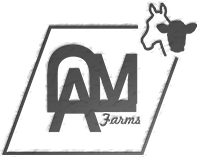
(Pictured is “Maggie Moo” with her fall 2018 bull calf from our current herd sire “Charlie” (for short) who we believe just might make us a new herd sire. Maggie is approaching 15 years of age and calves every 11 months she is one of our favorite girls but don’t tell the others)
Just a few facts for fun, as many of you may notice we have several cattle breeds but in case you didn’t know our very favorite is the Hereford. We also have Angus, Charlois, Semmental, Longhorn and a few Jerseys they are the best sergeant mothers, herd settlers and pasture pets <3.
Our Registered Herd Genetics however are all in Herefords as its our dream to promote and grow this breed back to where it once was in the US. Unlike the Angus breed the Hereford genetics have not been altered to the same extent mainly just because of the marketing of Angus Cattle and the push, more people know about Angus cattle simply because of marketing of the breed not necessarily for their superior qualities. It is a supply and demand effect that is why you see more “black” cows not all being the best of the Angus genetics unfortunately as with anything farmers were enticed to produce what paid a premium therefore anything that could be breed to accomplish a black offspring has became somewhat of the “motto”.
Most cattleman can attest that the Herefords are hearty, easy keepers, they finish well on grass alone mainly because their frame size has not been altered into such a large frame, they are very docile in nature and even if they are not their breed of choice currently many would produce them over “blacks” if they were paid a comparable premium I feel certain.
The origin of the Hereford has been lost over time but it is generally agreed that it was founded on the draught ox descended from the small red cattle of Roman Briton and from a large Welsh breed once numerous along the border of England and Wales.
The Hereford’s temperament is more docile thus allowing easier handling than other cattle breeds. Its meat quality is very good, rivaling that of Angus, another “British Breed”, known for ‘marbling‘ (intramuscular fat).
- Excellent meat quality.
- Early maturity and high performance on forage based diets.
- Adaptability – Herefords thrive in a wide variety of environmental conditions.
- Excellent temperament.
- Easy calving ability.
- Good fertility.
- Longevity.
Head characteristics: All Hereford cattle have a white face. … Cattle come as polled or horned. The horns of bulls and cows, if not corrected with weights, will grow up and forward. If corrected with weights, the horns will grow curving down and towards the inside.
- For farmers wishing to finish cattle on a smaller farm, Hereford may be very suitable. 1 acre is the stocking rate per animal sold each year for the spring system for Hereford crosses, in comparison to 1.2 acres for continental crosses.
